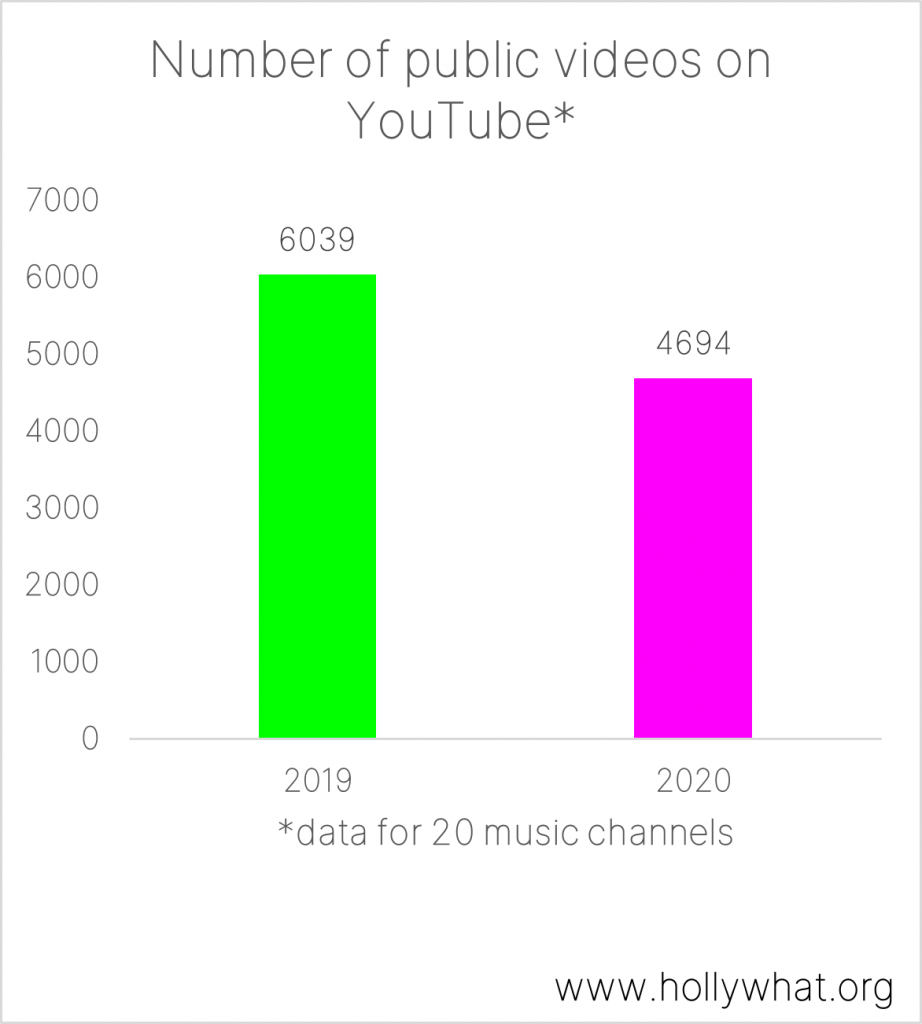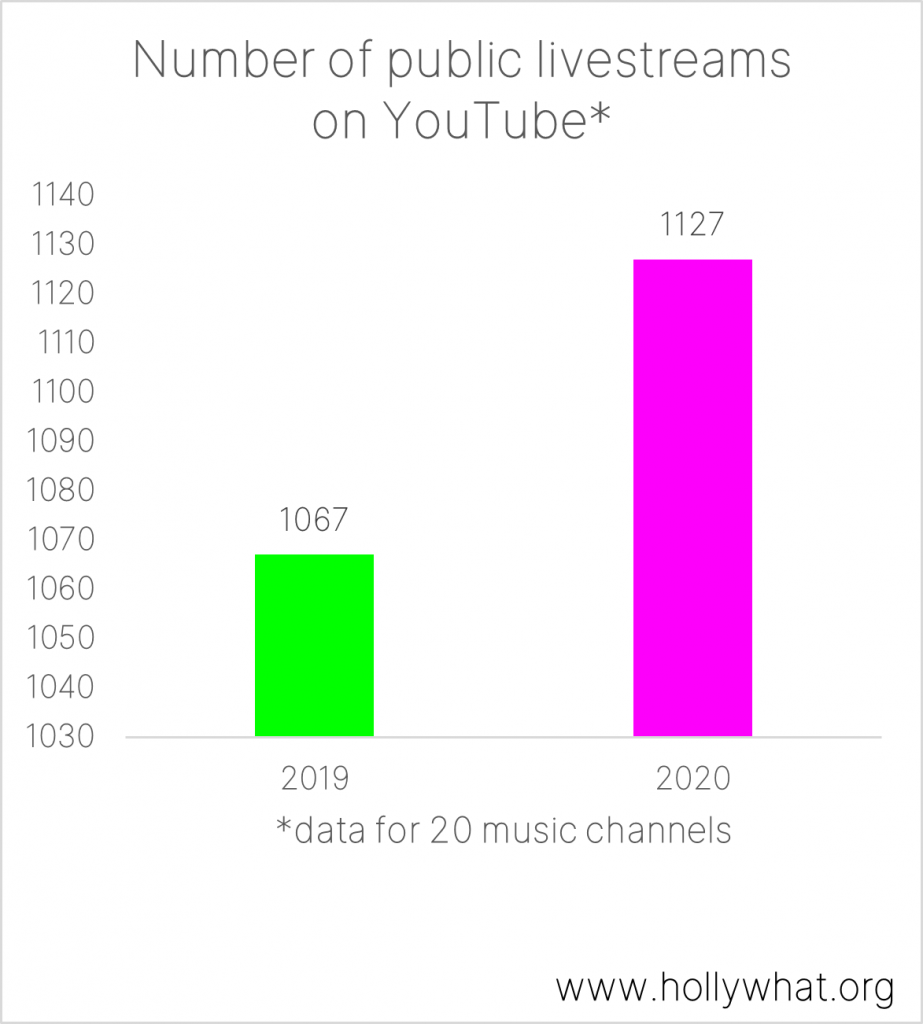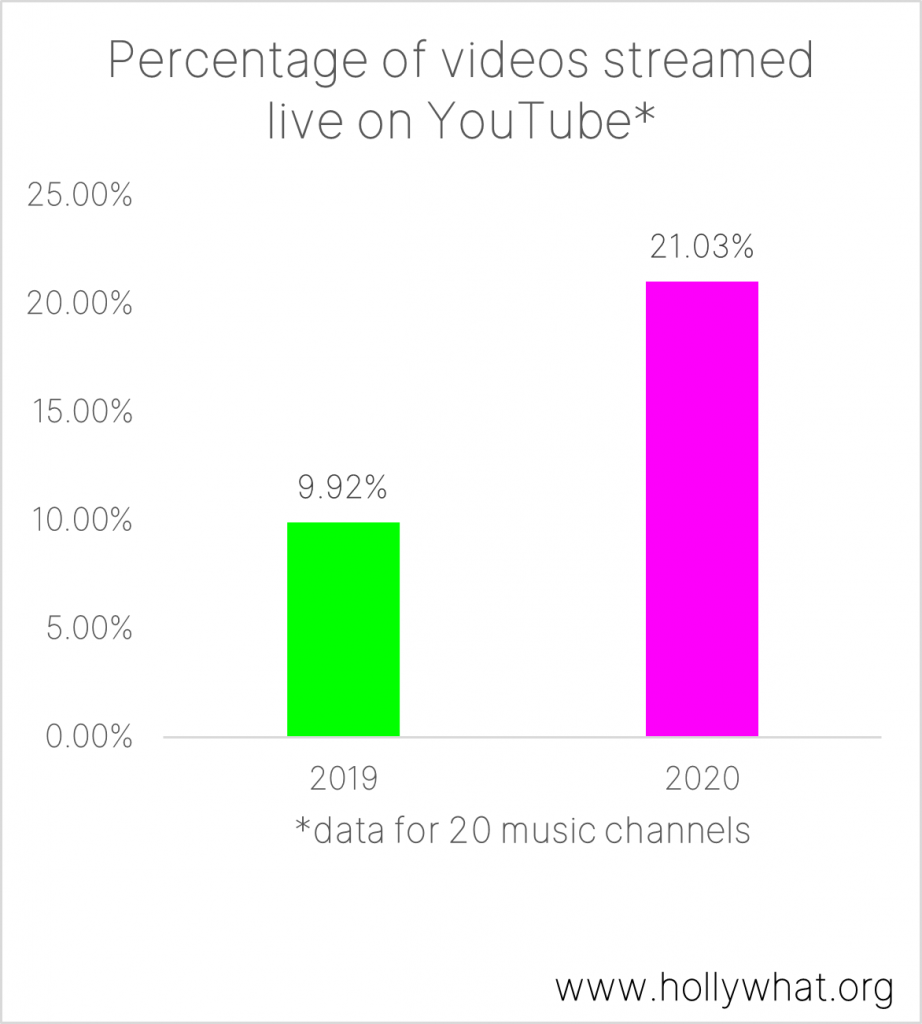The year 2020 was certainly one for the books. Looking back on this year I think we all can agree that it felt historic in many ways. Moreover, it was also historic when it came to virtual concerts and online music performances. Remarkable things have happened. Hence, it’s not surprising that several authors have come to the conclusion that livestreaming has had its breakthrough this year and that it will become a reliable new revenue stream for artists in the future. The big magazines appeared euphoric about livestreaming and virtual concerts as they recognized 2020 as a turning point:
Amy X. Wang said in The Rolling Stone:
“In under a year, livestreaming has gone from a niche, shrugged-aside field into a juggernaut of the music business […] According to Bandsintown, several thousand music livestreams are being put on every month, from superstars and emerging artists alike.”
Robb McDaniels (CEO of Beatport) wrote in Music Business Worldwide:
“History has shown us that periodic “shocks” to the global system can actually accelerate certain dormant or next generation ideas into the mainstream, and this has happened in a big way with livestreaming since the advent of COVID-19.”
1.5 million USD of production costs and 5 million viewers for one livestream, audiences booking livestreaming subscriptions like Spotify, and Spotify itself entering the livestreaming market – this will be the future. But wait a second. Weren’t there some authors prospecting the exact same thing already 10, 20 years ago? Yes, there were. Many people throughout the different phases of the internet have claimed that this whole business was changing for good in some common aspects. Despite, it didn’t, really. We checked prospections from 2020 around music livestreaming, this is part I of our review:
Myth #1: Livestreaming as a way of delivering video content is exploding
Total daily livestreams on YouTube grew 45% in the first half of 2020. Together with all the offers popping up in your social feeds, we could easily assume that livestreaming is the way-to-go for professional content creators, too.
Let’s stick to YouTube. We took 20 market-leading music channels and analysed their content supplying strategies in 2019 and 2020, respectively. These are the results:
In, total the channels supplied 6039 videos in 2019 as opposed to 4694 in 2020. This means a decline in uploaded videos by more than 22%. First and foremost not the best news.

But what about livestreaming explicitely?
The share of livestreamed content grew 112% from formerly 10% in 2019 to 21% in 2020. This seems like a big jump to be fair and it exceeds the overall growth from the YouTube statistics. At the same time, 21% share also means that only every fifth video was provided live.


Furthermore, we found that some channels developed more towards livestreaming and hence boosted the overall development. For example, COLORS grew their livestreaming business tremendously and is now relying mostly on livestreams. From the vanishingly low count of one livestream in 2019 among 95 videos they used the YouTube livestreaming feature for 80% of their content in 2020. On the other hand, we can also see that many channels didn’t participate in livestreaming. Leaders like Vevo and Pitchfork didn’t stream once. Cercle streamed one gig in 2019 and zero in 2020, that’s even a backwards trend.
| Channel | Number of videos | Number of videos | Number of livestreams | Number of livestreams | Percentage of livstreams | Percentage of livstreams | Percentage of livstreams |
|---|---|---|---|---|---|---|---|
| 2019 | 2020 | 2019 | 2020 | 2019 | 2020 | Difference | |
| ARTE Concert | 148 | 577 | 52 | 233 | 35.14% | 40.38% | 5.25% |
| BBC Music | 652 | 474 | 1 | 35 | 0.15% | 7.38% | 7.23% |
| BBC Radio 1 | 304 | 181 | 33 | 38 | 10.86% | 20.99% | 10.14% |
| BBCRadio1VEVO | 70 | 44 | 0 | 1 | 0.00% | 2.27% | 2.27% |
| Boiler Room | 1079 | 358 | 854 | 317 | 79.15% | 88.55% | 9.40% |
| Capital FM | 323 | 168 | 5 | 13 | 1.55% | 7.74% | 6.19% |
| Cercle | 23 | 13 | 1 | 0 | 4.35% | 0.00% | -4.35% |
| COLORS | 95 | 109 | 1 | 87 | 1.05% | 79.82% | 78.76% |
| DJ Mag | 172 | 221 | 87 | 197 | 50.58% | 89.14% | 38.56% |
| Drum&Bass Arena | 361 | 404 | 1 | 24 | 0.28% | 5.94% | 5.66% |
| KCRW | 100 | 89 | 0 | 1 | 0.00% | 1.12% | 1.12% |
| KEXP | 1334 | 807 | 6 | 71 | 0.45% | 8.80% | 8.35% |
| La Blogothéque | 63 | 73 | 1 | 1 | 1.59% | 1.37% | -0.22% |
| Mixmag | 399 | 167 | 21 | 61 | 5.26% | 36.53% | 31.26% |
| NPR Music | 137 | 260 | 0 | 33 | 0.00% | 12.69% | 12.69% |
| Pitchfork | 82 | 35 | 0 | 0 | 0.00% | 0.00% | 0.00% |
| Resident Advisor | 50 | 31 | 4 | 5 | 8.00% | 16.13% | 8.13% |
| The Current | 516 | 566 | 0 | 10 | 0.00% | 1.77% | 1.77% |
| Vevo | 9 | 17 | 0 | 0 | 0.00% | 0.00% | 0.00% |
| VevoDSCVR | 122 | 100 | 0 | 0 | 0.00% | 0.00% | 0.00% |
| Overall | 6039 | 4694 | 1067 | 1127 | 9.92% | 21.03% | 11.11% |
After all, we can’t talk about an explosion of music livestreaming on YouTube in 2020 yet. There was, indeed, a growth by factor 2 between 2019 and 2020, but the music industry still relies on standard uploads for the majority of the content.
One thing is noteworthy regardless: incumbents like the ones in our dataset might not be agile enough to accustom quickly to the changes caused by COVID-19. We can see that by looking at the drop in videos supplied: in 2020, the analysed 20 channels supplied 1300 videos less than in 2019. It is well possible that many new channels rose up on YouTube which exploited livestreaming heavily. We might see them pop up in our 2021 review then, when we once again look into the most popular channels by subscriber count. If you know a channel to watch, leave it in the comments!
A second myth deals with livestreaming too, but goes one step further:
Myth #2: Lower-quality streams are taking a back seat (The Rolling Stone, 2020)
When we talk about “lower-quality” we always refer to technological features because this has been a concern ever-since concert livestreaming was born. Thus, what we did was to look at the share of HD livestreams among the livestreams in our dataset. Out of 1127 livestreams in 2020, 1104 were of HD quality. That’s a proportion of 97.5%.
| Channel | Number livestreams | Number of HD livestreams | Percentage of HD livestreams |
|---|---|---|---|
| 2020 | 2020 | 2020 | |
| ARTE Concert | 233 | 232 | 99.57% |
| BBC Music | 35 | 35 | 100.00% |
| BBC Radio 1 | 38 | 38 | 100.00% |
| BBCRadio1VEVO | 1 | 1 | 100.00% |
| Boiler Room | 317 | 315 | 99.37% |
| Capital FM | 13 | 13 | 100.00% |
| Cercle | 0 | – | – |
| COLORS | 87 | 80 | 91.95% |
| DJ Mag | 197 | 195 | 98.98% |
| Drum&Bass Arena | 24 | 22 | 91.67% |
| KCRW | 1 | 1 | 100.00% |
| KEXP | 71 | 63 | 88.73% |
| La Blogothéque | 1 | 1 | 100.00% |
| Mixmag | 61 | 61 | 100.00% |
| NPR Music | 33 | 33 | 100.00% |
| Pitchfork | 0 | – | – |
| Resident Advisor | 5 | 5 | 100.00% |
| The Current | 10 | 9 | 90.00% |
| Vevo | 0 | – | – |
| VevoDSCVR | 0 | – | – |
| Overall | 1127 | 1104 | 97.52% |
HD is now state-of-the-art for livestreaming, just as Wired prospected more than a decade ago:
“The audio on these webcasts is far from optimal; live mikes and streaming compression see to that. But the video quality often surpasses much of what’s available on YouTube. If the technology issue hasn’t been solved yet, it’s damn close.“
van Buskirk in Wired (2007)
“Live music is going to have a renaissance now — the technology is proven, there’s more broadband penetration […]”
van Buskirk in Wired (2009)
References/Readings
The Rolling Stone, 2020
Millman, E. (2020, August 4). Better Concert Livestreams Are Coming. But You’ll Have to Pay for Them. Retrieved from https://www.rollingstone.com/pro/features/paid-livestreams-music-concerts-covid-1035068/
Wired, 2007
van Buskirk, E. (2007, December 24). Live Music Webcasting Starts Making Sense in 2008. Retrieved from https://www.wired.com/2007/12/listeningpost-1224/
Wired, 2009
van Buskirk, E. (2009, June 11). 4 Ways Live and Digital Music Are Teaming Up to Rock Your World. Retrieved from https://www.wired.com/2009/11/4-ways-live-and-digital-music-are-teaming-up-to-rock-your-world/
